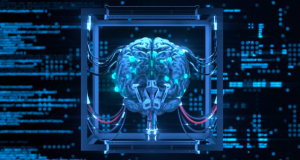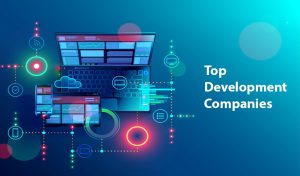According to a report by Statista, the global AI market size is projected to reach a staggering $190 billion by 2025, showcasing the tremendous growth in investment and adoption. Additionally, in 2020, there were over 300,000 AI-related job openings in the United States alone, underlining the demand for AI expertise in various industries.
Another key statistic is the exponential growth of data, a fuel for AI, with the world generating approximately 2.5 quintillion bytes of data daily. This data explosion has paved the way for machine learning and deep learning algorithms, driving AI advancements. Furthermore, AI applications are increasingly integrated into everyday life, with voice assistants like Alexa and Siri handling billions of voice queries each month.
In this article, we have explained the concept of AI in simple and easy terms. Read our blog to kick-start your learning of Artificial Intelligence. This blog is for beginners who want to learn AI.
What is Artificial Intelligence?
Artificial Intelligence (AI) refers to the development of computer systems that can perform tasks typically requiring human intelligence. It involves creating algorithms and software that enable machines to learn from data, make decisions, solve problems, and even understand natural language.
Moreover, AI systems aim to mimic human cognitive functions like perception, reasoning, and problem-solving, but they can also excel in areas where machines have inherent advantages, such as processing large amounts of data quickly and accurately.
AI is incredibly versatile and finds applications in various fields, from healthcare and finance to transportation and entertainment. Some common examples of AI in action include voice assistants like Siri, recommendation systems on platforms like Netflix, and self-driving cars. These applications act like AI agents and communicate with humans.
As AI technologies continue to advance, they have the potential to revolutionize industries, improve efficiency, and enhance our daily lives in numerous ways. These examples will help beginners to understand artificial intelligence better.
Key features of AI
Here are some key points to understand:
Mimicking Human Intelligence: AI tries to make computers do things that typically need human thinking, like recognizing patterns, solving problems, making decisions, and understanding language.
Learning from Data: One important part of AI is learning from data. AI systems can get better at tasks by analyzing lots of examples. For instance, they can learn to recognize cats in pictures by looking at many cat pictures.
Applications of AI: AI is used in many areas, such as healthcare (for diagnosing diseases), autonomous vehicles (like self-driving cars), gaming (for creating intelligent opponents), and even in everyday apps and devices.
Machine Learning: A big part of AI is machine learning, which is a technique where computers learn from data to improve their performance on a task. It’s like teaching a computer through examples.
Neural Networks: These are a special kind of computer program inspired by the human brain. They are used in many AI applications, especially in deep learning, which is a subset of machine learning.
Big Data: AI often needs a lot of data to learn and make decisions. This is where big data comes in – collecting and analyzing huge amounts of information.
Ethical and Social Concerns: AI also brings up important questions about ethics and society, like privacy, job automation, and bias in algorithms.
In a nutshell, AI is about making machines smart by teaching them to learn from data and perform tasks that normally require human intelligence. It’s a fascinating field with a lot of potential to improve our lives but also comes with challenges that need careful consideration.
How Artificial Intelligence concept begin?
The concept of Artificial Intelligence (AI) dates back to ancient history, but the formal beginnings of AI as a field of study can be traced to the mid-20th century. People have been imagining machines that can act like humans in ancient times. In the 1800s, inventors like Charles Babbage designed mechanical calculating machines that can be considered precursors to modern computers.
These were like early computers. However, the term “Artificial Intelligence” was coined in 1956 at the Dartmouth Workshop, where a group of computer scientists, including John McCarthy and Marvin Minsky, gathered to explore the idea of creating machines that could simulate human intelligence.
In the 1950s and 1960s, researchers developed the first AI programs, which focused on tasks like playing chess, solving mathematical problems, and language translation. These early efforts laid the groundwork for further AI research. During World War II, a smart guy named Alan Turing helped make secret codes and came up with ideas that helped shape modern computers and AI.
Today, AI is a thriving field with applications in diverse areas, including natural language processing, image recognition, robotics, autonomous vehicles, healthcare, and finance. We’ve made computers that can learn and think more like humans, and AI is a big part of our lives now.
What is the use of Artificial Intelligence in different industries?
Artificial Intelligence (AI) is making significant impacts across various industries by automating tasks, improving decision-making, and enhancing efficiency. Here are some examples of how AI is used in different industries:
Healthcare:
- Diagnosis and Disease Prediction: AI-powered systems analyze medical data like X-rays, MRIs, and patient records to assist doctors in diagnosing diseases and predicting health outcomes. For instance, IBM’s Watson for Oncology helps oncologists in cancer treatment decisions.
Finance:
- Algorithmic Trading: AI algorithms analyze market data in real time to make rapid trading decisions. High-frequency trading firms use AI to execute thousands of trades per second, optimizing investment strategies.
- Fraud Detection: AI systems detect fraudulent activities in financial transactions by analyzing patterns and anomalies. Banks use AI to prevent credit card fraud, for example.
Retail:
- Personalized Recommendations: E-commerce platforms like Amazon use AI to recommend products to customers based on their browsing and purchase history.
- Inventory Management: AI predicts demand and optimizes inventory, helping retailers reduce costs and minimize overstock or stockouts.
Manufacturing:
- Quality Control: AI-driven computer vision systems inspect and identify defects in manufacturing processes. For example, in the automotive industry, AI ensures that cars meet quality standards on assembly lines.
- Predictive Maintenance: AI analyzes data from sensors and equipment to predict when machinery needs maintenance, reducing downtime and costs.
Transportation:
- Autonomous Vehicles: AI is at the core of self-driving cars and trucks. Companies like Waymo and Tesla use AI to navigate and make driving decisions.
- Route Optimization: Ride-sharing platforms use AI algorithms to optimize routes for drivers, reducing travel time and fuel consumption.
Entertainment:
- Content Recommendation: Streaming services like Netflix use AI to recommend movies and TV shows to users based on their viewing history and preferences.
- Video Games: AI-driven characters in video games adapt to player behavior and provide challenging gameplay experiences.
Agriculture:
- Precision Farming: AI-powered drones and sensors collect data on soil conditions, crop health, and weather. Farmers use this information to make precise decisions about planting, irrigation, and pest control, improving crop yields.
Energy:
- Grid Management: AI optimizes the distribution of energy in smart grids by analyzing data from sensors and adjusting power flow to meet demand efficiently.
- Energy Efficiency: AI systems control HVAC systems and lighting in smart buildings to reduce energy consumption when spaces are unoccupied.
Education:
- Personalized Learning: AI-based educational platforms adapt learning materials and activities to individual students’ needs and progress.
- Administrative Tasks: AI automates administrative tasks like grading multiple-choice tests and managing student records.
These are just a few examples, and AI’s applications continue to expand across industries. Its versatility and ability to process and analyze large volumes of data make it a powerful tool for improving processes, reducing costs, and enhancing decision-making in diverse sectors.
Methods of Artificial Intelligence
Artificial Intelligence (AI) encompasses a variety of methods and techniques used to enable machines and computers to simulate human intelligence and perform tasks. Here are some of the key methods and approaches within AI:
Machine Learning (ML)
- Supervised Learning: In supervised learning, models are trained on labeled data, where the algorithm learns to make predictions based on input-output pairs. Examples include image recognition and spam email detection.
- Unsupervised Learning: Unsupervised learning involves clustering and dimensionality reduction. It finds patterns in unlabeled data without specific guidance. Examples include customer segmentation and topic modeling.
- Reinforcement Learning: Reinforcement learning teaches machines to make sequential decisions by rewarding desired behaviors. It’s used in applications like autonomous robotics and game playing, such as AlphaGo.
Deep Learning
- Deep learning is a subset of machine learning that employs artificial neural networks. These networks consist of multiple layers (deep layers), making them capable of handling complex tasks like image and speech recognition.
- Convolutional Neural Networks (CNNs) are used for image analysis, while Recurrent Neural Networks (RNNs) are suitable for sequential data, such as natural language processing.
Natural Language Processing (NLP)
NLP focuses on enabling computers to understand, interpret, and generate human language. It’s used in applications like chatbots, sentiment analysis, and language translation (e.g., Google Translate).
Computer Vision
Computer vision is concerned with teaching machines to interpret and understand visual information from images or videos. It’s used in facial recognition, object detection, and autonomous vehicles.
Expert Systems
Expert systems use knowledge-based rules to solve specific problems. They’re particularly useful in fields like healthcare for diagnosing diseases based on medical data and symptoms.
Genetic Algorithms
Genetic algorithms mimic the process of natural selection to find optimal solutions to problems. They’re used in optimization tasks and can adapt and improve over time.
Fuzzy Logic
Fuzzy logic deals with uncertainty and imprecision in decision-making. It’s applied in control systems, like air conditioning and washing machines, where precise decisions may not always be required.
Recommender Systems
Recommender systems use collaborative filtering and content-based filtering to make personalized recommendations, such as movie or product recommendations on platforms like Netflix and Amazon.
Speech Recognition
Speech recognition technology converts spoken language into text and is used in voice assistants (e.g., Siri and Alexa) and transcription services.
Robotics
AI plays a crucial role in robotics, enabling robots to perceive their environment, plan actions, and make decisions autonomously. This is essential for applications like industrial automation and autonomous drones.
Swarm Intelligence
Swarm intelligence models are inspired by the collective behavior of groups in nature (e.g., ants, birds). They are used in optimization problems and routing algorithms.
Future of AI
The future of AI holds tremendous promise and potential to reshape virtually every aspect of our lives. As AI technologies continue to advance, we can expect to see increasingly intelligent systems that enhance productivity. It not only improves decision-making but also revolutionizes industries. AI will play a pivotal role in healthcare, aiding in early disease detection, personalized treatment plans, and drug discovery.
In transportation, autonomous vehicles are likely to become more prevalent, transforming how we commute and reducing traffic accidents. Moreover, AI-driven solutions will continue to drive innovations in fields like renewable energy, climate modeling, and resource optimization, helping us address pressing global challenges.
However, the future of AI also raises important ethical and societal questions. Concerns about job displacement due to automation, biases in AI algorithms, and privacy issues will need to be carefully addressed.



